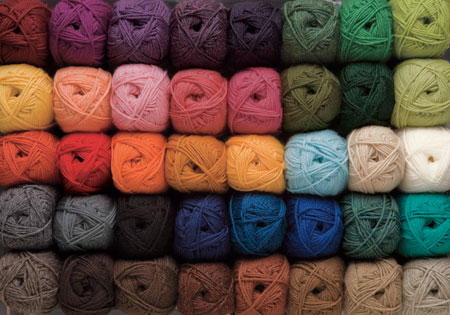Design School 101: Wool Fibers
As a Interior Designer, I work with fabrics, carpets, and soft goods everyday. When specifying textiles I consider fiber content, durability, color fading, wear resistance, cost, longevity, environmental impact and if it’s appropriate for the specific application. Understanding the properties of textiles is key to being able to make the right specification for the client. The inherent natural properties of wool make it a captivating choice the home or office. Here are the basics understanding wool as a fiber in interior design.
https://www.woolmark.com/collaboration/interiors/striking-a-balance-2/?enforce=true
Synthetic vs Natural
First things first, fibers are generally broken down into two categories: Synthetic and Natural. From there, natural fibers are further broken down into cellulosic, plant based like cotton and linen, and protein based like wool.
Wool Production
Wool comes from the fleece of the sheep. The process by which wool is cut off from the sheep is called shearing. After sheering, the wool is sorted into 4 categories by quality: fleece, broken, bellies and locks. The quality of the wool is determined by a professional and is called wool classing. The most important factor is sorting the wool is the fiber diameter, along with crimp, yield, color and strength. The crimp and elastic qualities of wool make it different from hair and fur. The quality of the crimp corresponds to the fineness of the wool fibers.
Merino Wool
Most commonly known, is Merino wool. Southwestern Spain held a monopoly on the trade up until the 18th century. Modern Merino wool can be found in New Zealand and Austria. Even today, Merino sheep are still regarded as having some of the finest and softest wool of any sheep. What makes their wool so soft is that they have up to 100 crimps per inch. Corser wool may have as few as one or two crimps per inch. Less crimps decreases the ability to bind into yarn.
Global Production
Globally about 2 million tons of wool is produced. 60% of that goes into the apparel industry, only 3% to the textile market. Australia, China and New Zealand continue to be the three top produces of wool.
Color Considerations
Wool is naturally a creamy white color, although some sheep produce natural colors like black, brown and silver. Keep this in mind when designing a custom wool rugs. You will never be able to get a true “bright white” since wool naturally has a creamy undertone.
http://www.sassysewing.co.uk/is-wooly-wooly-warm/
Carpet
When it comes to carpet, we all love the look an feel of a natural wool, but the upfront cost is an investment. Wool is one of the best natural fibers to use in carpets as it is very durable and resilient. It has a superior hand and appearance. Each fiber on it’s own is relatively week, but together the fibers are resilient have and excellent elasticity. Wool is naturally resistant to soiling and cleans very easily. A wool carpet should last 10 years with proper care before showing signs of wear on the major walk ways. Wool carpet will keep it’s appearance longer than synthetic carpets.
https://www.woolmark.com/collaboration/interiors/striking-a-balance-2/?enforce=true
Fabric
Wool is a great fabric to use for window treatments and upholstery because of it’s resiliency. Crimps and creases fall out easily. Wool fabrics are often bulkier than other textiles because of the natural crimp keeping the fibers together, but allowing more air to be held. This causes the fabrics to retain heat.
Fire Factors
Although wool will ignite and burn at high temperatures, it has a low flame spread rating and will self extinguish when removed from heat. It has a low rate of heat release and combustion. It will not melt or drip when ignited. In the event of a fire, wool contributes less to toxic gases and smoke then other fibers used in carpets. This makes it an ideal material to be specified for high safety environments like trains and aircraft’s.
Environmental Factors
Wool is an all natural and renewable fiber. Wool products have a longer life span than other fibers. Wool is naturally antibacterial and antimicrobial. It contains fatty acids and inhibit the growth of mold, mildew and bacteria. This means that wool products do not need to be washed as frequently. Wool is recyclable! It can be shredded into individual fibers and converted into a new product. Once it eventually does reach the end of its life, wool fiber is naturally biodegradable!
https://www.millerwastemills.com/materials/wool-fiber/





